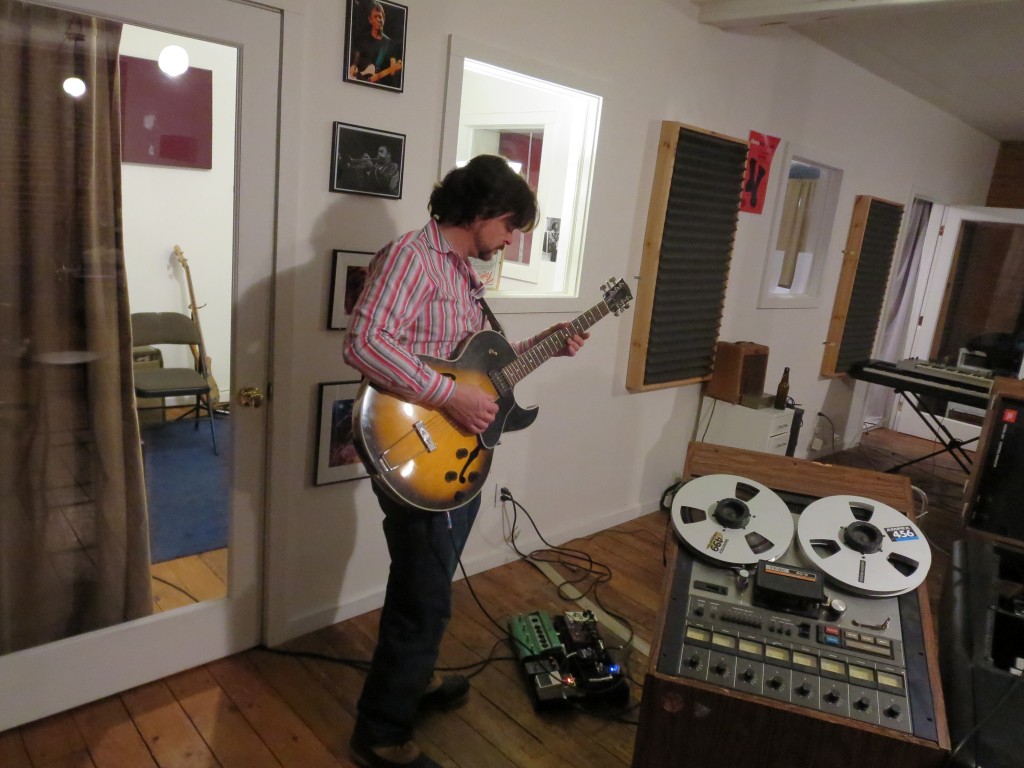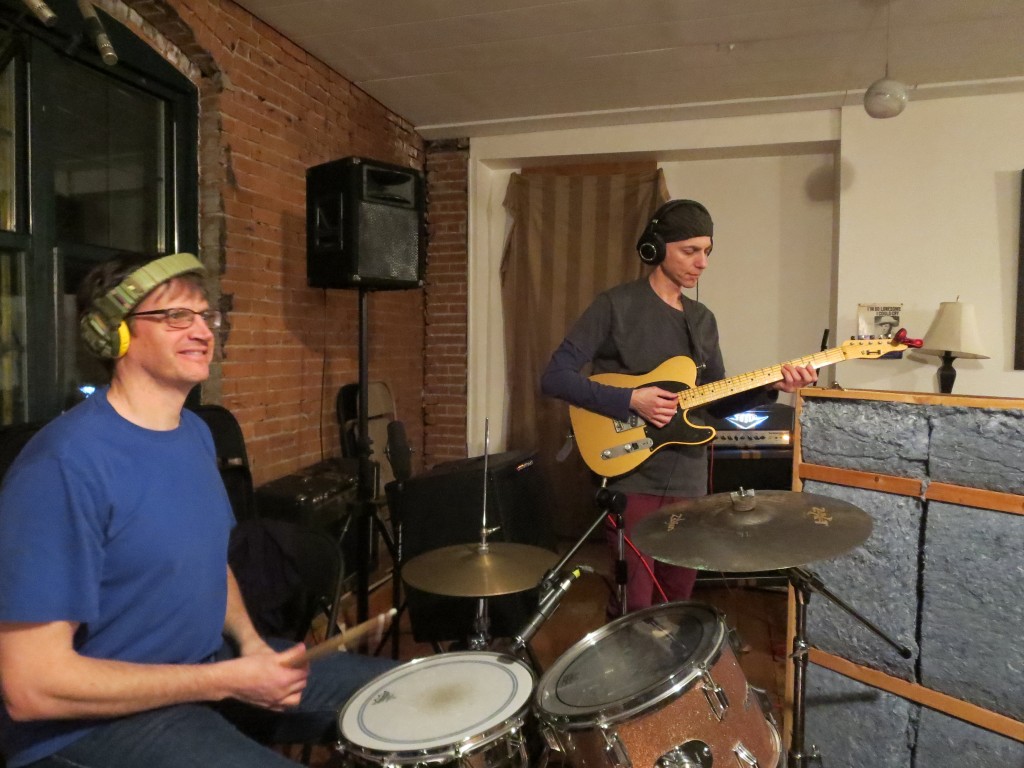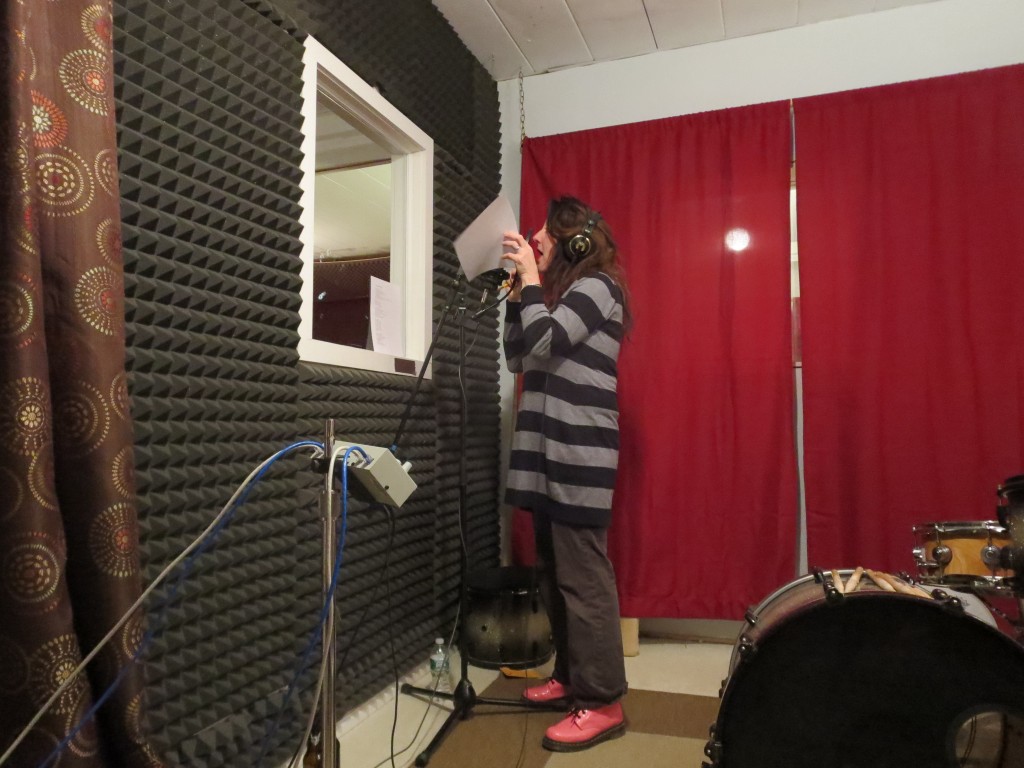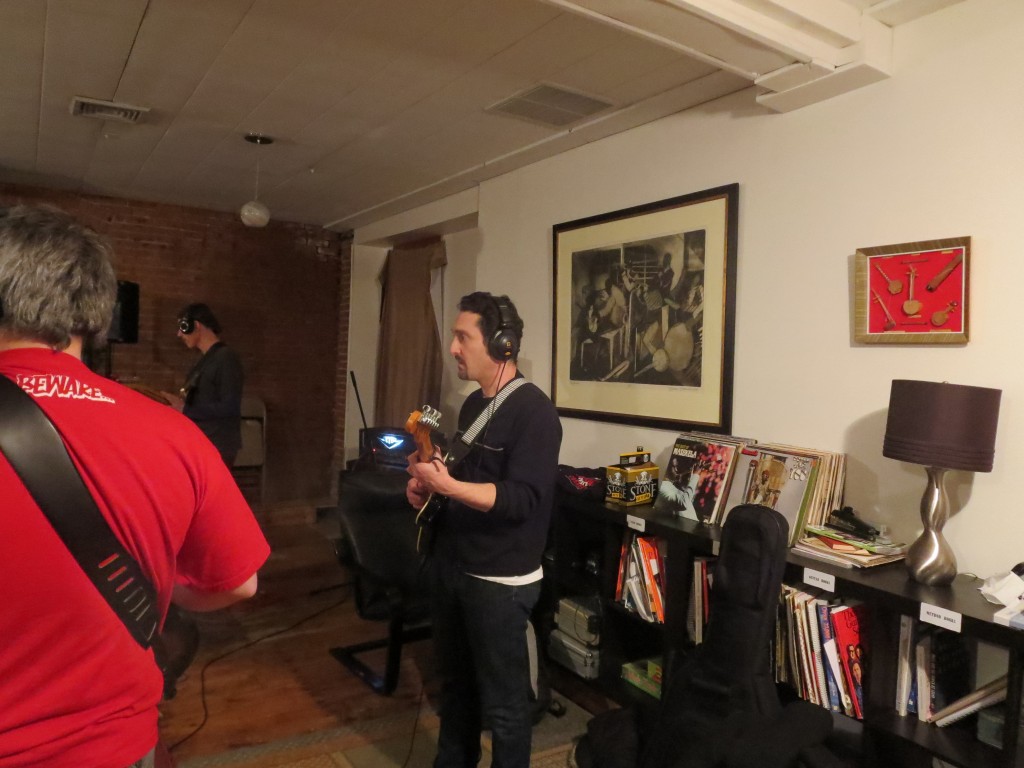In urbanists’ excitement over music scenes and the desirability of “social and interactive street-level culture” (to invoke Richard Florida), it’s easy to lose sight of whether there’s any value to all of this besides promoting careers and urban economies. Does “enriching creative communities” actually involve extending the practice of creativity into people’s everyday lives? Or does it just mean supporting institutions, businesses and performance venues that hire professional artists?
The issue is cast in sharp relief by how most people generally consume creative products today. Whether we’re purchasing books, art and CDs in physical or digital form (and, a separate issue, whether we pay for these goods or illegally download them), or taking in concerts, festivals and other performances, most people engage creativity as passive consumers. We watch and listen, letting others do the creating. This is the legacy of the 20th century’s culture industry, which in the case of music was epitomized by the recording sector’s eclipse of the sheet music industry.
Sheet music — really, who uses that anymore? The question isn’t necessarily about the decline of public-school music education… which, incidentally, is often protested in economics terms of professional livelihoods and economic opportunities being lost. Sheet music was overwhelmingly purchased and used by people playing on their home pianos, acoustic guitars and other instruments, often in collective performance with family, friends and fellow music enthusiasts. And of course we don’t have to narrow this phenomenon to people formally trained to read sheet music: another obvious example is the guitar’s role in traditional folk music, a genre generally transmitted through verbal training and face-to-face example. The point is that these are modes of active creativity, and there’s a name for people actively create unmotivated by economic reward: amateurs.
Are our creative communities equipped to sustain and enrich the lives of amateurs?
***
Last December I saw this Facebook update from the Community Music Space, a business for music lessons and recording located in Red Hook, NY.
In January we will be offering a 10 week rock band session for adults focused on a particular artist.
If you were going to take this class who would you want to cover?
So far we have interest in The Pretenders, Elvis Costello, and The Band.
I’d never seen such an opportunity advertised before. And the Pretenders?! I was excited, but there was a problem: I no longer had an electric guitar, an amplifier, or any other musical equipment. No problem, they assured me, I could use theirs. So I took the dive. For $175, I signed up for the 10-week adult rock band party.
A note of musical biography: I’ve taken music lessons since grade school but could never commit to any one instrument. I started with clarinet but gave that up for piano. Then I stopped piano lessons and started classical guitar lessons, eventually giving those up when I announced to my parents my goal all along of playing electric guitar. By age 16 I was a DIY learner, self-taught by listening to the Ramones and Cramps, which made for a very primitive band in high school. In college I couldn’t get a band together, but after graduation they really started rolling: four groups, and three different instruments: guitar, then bass and finally drums. Always self-taught, I ended up a jack of all instrumental trades, master of none, but I’ve always enjoyed playing in bands and undertaking the musical problem-solving that came with it. Perhaps out of necessity, I also grew fond of the sound of a sloppy, little-rehearsed group.
At the Community Music Space, I joined four men and one woman of ages (I’m guessing) between mid-30s to early 50s. They were much better on their instruments than I was, not surprising since I hadn’t played the guitar seriously in over 20 years. We didn’t “form a band”; no one even tossed around possible band names, something I remember as an enjoyable time-killer from my youth. Instead, we quickly identified three songs we wanted to play: Elvis Costello’s “Pump It Up,” and the Pretenders’ “Message of Love” and “Kid” and got down to work, using 1-2 of the two-hour sessions to learn and practice a single song. Lyrics and guitar tabs were e-mailed out beforehand, and our leader Josh, the seventh participant and a killer guitarist, would help me find the chords on the fretboard. The objective of all this would be to build up a repertoire from which we would select a few songs to record in our tenth week.
To give you a sense of how much fun all of this was, allow me to nerd out for a minute about “Message of Love.” This is probably my favorite song by the Pretenders, a group whom I’ve dedicated many air-guitar hours imagining myself as their new hotshot guitarist. Besides supporting one of Chrissie Hynde’s most exuberant lyrics, the tune features the kind of idiosyncratic structure common to her early songwriting, with a sequence of elements (AABCAD) that don’t appear to compositionally reference one another but still sound fantastic in sequence. As we discovered in practice, the song has other great elements: a tub-thumping 1970s glitter rock beat, a deceptively tricky swing in its two-chord verse (the A section), and a sublime middle-eight (the C section) that I’ll never tire of hearing playing. To me, the price of the entire sessions might have been worth it just for Josh to me the ghost chords that you hear in the song’s last section (Dm7sus4 to Bbmaj6, the four bars before Hynde sings Talk to me darlin…).
Someone whipped out their smart phone and recorded the results of our session dedicated to “Message of Love.” Yeah, we sounded like a loud, ricketey train. In particular, three guitars simultaneously strumming the chord triplets in the B section (Me and you/Every night, every day…) makes for a bracing experience — a sound I’m partial to, although I wouldn’t necessarily share it with anyone. (Oh, okay: here it is.) When we returned to the song for our last week’s recording session, Josh rearranged this B section so the guitarists each played a different figure. I happily accepted the job of strumming the underlying chord once per bar — “kicking footballs,” Josh called it.
At the suggestion of other members, more got added to our repertoire: “Winding Road” from the Garden State soundtrack, the Meters’ “Just Kissed My Baby.” In one session where our singer and drummer were absent, Josh got behind the drums, and I got behind the microphone, which equalized the skills among the four of us. That evening we tossed around about 5 or 6 songs — “Green Onions,” “Breakdown,” “Beast of Burden,” etc. — and I got to live out my Replacements’ drunken concert fantasy.
At the end of our 10 weeks, Josh and Community Music Space owner Ben Senterfit set up the microphones, Ben got behind the digital mixing board, and we laid down live recordings of two songs, “Message of Love” and “Just Kissed My Baby.” Ben sent us the MP3s, I added some photos and video footage from that final session, so now we have a couple of great-sounding YouTube videos to share on friends and family. (Be forewarned: my skills on iMovie are about as good as my guitar playing.)
***
So, what’s this all about? Well, in contrast to the more traditional music training taken by kids and teenagers with real futures ahead of them, or to the recording services that Community Music Space provides, the adult rock band session doesn’t create real substantial ‘economic value’. We middle-aged amateurs aren’t about to hit the bar-band circuit or give up our day jobs. The recordings and video we produced may have some promotional benefit for the Community Music Space, but more likely they’ll be Facebook fodder that our contacts will politely scroll past.
If you were to take an economist’s narrow view of things, it seems what we’re left with at the end of 10 weeks are momentos of a highly interactive, one-of-a-kind consumer experience. You pay your money, and in return they set you up with a rehearsal space, equipment, fellow students and friendly guidance, plus a couple of recordings. It’s not that far off from some of the those musical masters camps that big-name boomer musicians host.
But this glorified ‘exchange of service for payment’ is entirely the wrong way to think about it. I was given a well-organized opportunity to make music for its own sake — to be an amateur in a setting where others doing the same thing and validating each other for it. I added my little contribution to an ensemble that’s a lot more enjoyable to play in and listen to than the solo strumming I might do at home on an acoustic guitar. I made six new friends and shared a richly social experience that required little small talk; in fact, I still don’t even know what half these folks do for a living. I even got a chance to say otherwise ridiculous things like “deep in the pocket,” “music is the greatest,” and “a funky good time” in an appropriate setting where for once I didn’t slighly wince.
I can’t say that repeated family viewings of these videos will encourage my kids to take up music lessons, but that’s not the point. What I hope they’ll learn is that playing and living music are for everyone, at all stages of life. Music isn’t only for listening; it’s for being.
It’s in this sense that the Community Music Space lives up to its name. I’m an unabashed advocate of this business and its model (both of which inspired a post awhile back about an alternative vision of arts-based urban revitalization). Yes, they train the future musicians and record the demos that in theory represent an export-oriented, recording- and touring-based musical scene. But their genius is how they help music stick to the place they’re based in. Think of this as the converse to how the video of me and my friends playing “Message of Love” becomes exponentially less interesting to you the more distant you are from our personal network. The “value added” of organizations like the Community Music Space lies in the meanings and milieus for local music-making that they enable.
This might sound abstract, but increasingly we understand such a relationship for food. From CSAs to farm-to-table dining to dinner-party networks, the local food movement is motivatived by environmental principles, but for participants its more immediate rewards gnerally come from the connections to place and people that these organizations and activities promote. Is it really so strange to conceive a “local music movement” along such lines? Might not such connections promote the social, political and, yes, economic health of a community?






3 comments
modern says:
Sep 23, 2014
This just made my day better.
Guitar Lessons says:
Sep 29, 2014
Really good read!
Salomon says:
Mar 28, 2016
What I hope they’ll learn is that playing and living music are for everyone, at all stages of life.